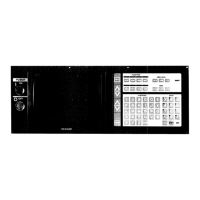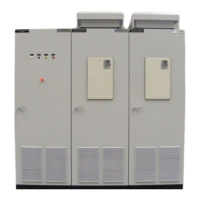b. The first rounding touches the first and
second straight lines.
c.
The second beveling and rounding depend
on the designation of second straight line
as shown below:
(i) The second straight line is specified with
B and X(U).
ROUNOING TOUCHING THE
STRAIGHT LINE PARALLEL
TO ZAXIS
(ii) The second straight line is specified with
B and Z(W).
&
Q
B
z ( w’)
ROUNDING TOUCHING THE
STRAIGHT LINE PARALLEL
TO XAXIS
Table 2.35 Directions of Second Beveling
B command
value for sec-
ond straight Iine
move angle
B=o
= –360.000
= 360.000
0 <6,
B <90.000
–S60.003 <B,
B c –270.000
—
B = 90.000
= –270.003
d. The second beveling and rounding are pre-
formed in the direction in which the second
straight line advances.
For details, refer
to Table 2.35.
90.000< B,
B <180.000
–270.000< B,
B < –180.000
B = 180.000,
–
–180.000
—
Beveling
direction + x
L
-z
Beveling in X, Z
positive direction
...------/
Beveling in X neg-
ative direction, Z
positive direction
Beveling in X, Z posi-
tive birection
d
Beveling in X, Z pcsi-
tive direction
Beveling in X posi-
tive, Z negative
direction
‘)
‘\
Beveling in X posi-
tive, Z negative
direct ion
Beveling in X posi-
tive, Z negative
direction
. . . . .
Beveling in X nega-
tive, Z negative
direction
/--------
Other
conditions
First
straight
line moves in X
positive direc-
tion.
First straight line
moves in X nega-
tive direction.
First straight line
moves in Z posi -
tive direction.
First straight line
moves in Z nega-
tive direction.
/
First straight line
moves in X posi-
tive direction.
First straight line
moves in X nega-
tive direction.
137

